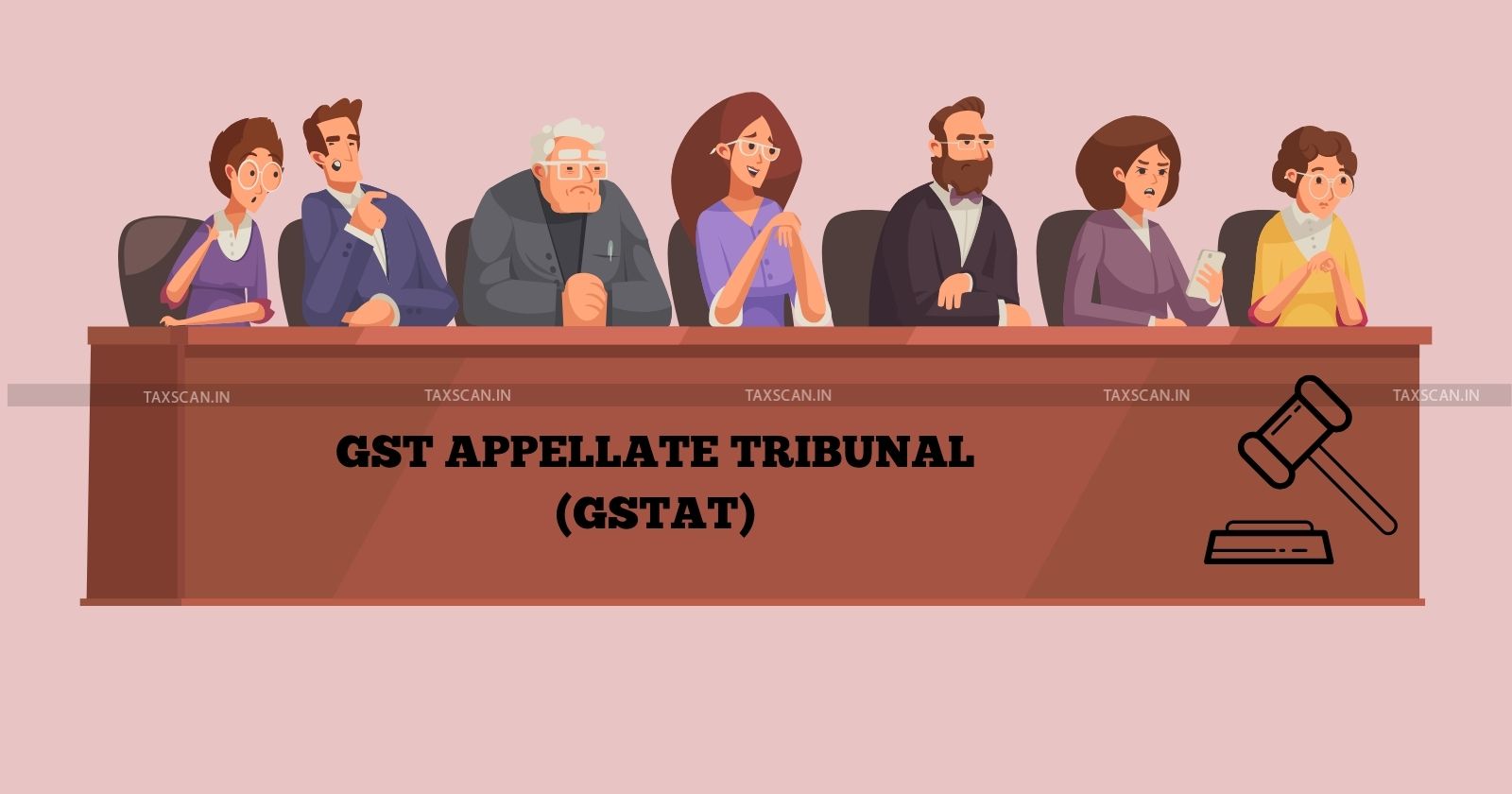Can GST Appeal-Late Tribunal Condone the Unpardonable Delay of 2,706 days in Constitution of GSTAT
The GST Appellate Tribunal is poised to start operations by the end of the current Financial Year

The Goods and Services Tax Regime was brought into force on 1 July, 2017, as a means to unify the highly fragmented indirect taxation system in India. The erstwhile indirect taxation system contained numerous state and central taxes and cesses which were all subsumed by the GST regime. Financial watchdogs claim that the GST Regime has been successful to an extent in integrating numerous taxation mechanisms, but it is no doubt that the lack of an adequate appellate redressal mechanism and allied institutions have left litigants in a puddle.
1st July, 2024 marked 7 years since the implementation of the GST Regime, however the lack of a dedicated second Appellate Body still mounts needless burden on the already burdened jurisdictional High Courts. It is no doubt that every new inclusion into the legal apparatus may be disputed in a court of law, the Constitution of India guarantees such right of an aggrieved person to approach the relevant courts seeking redressal.
Become a PF & ESIC expert with our comprehensive course - Enroll Now
Constitution of GSTAT
Section 109 of the Central Goods and Services Tax Act, 2017 ( CGST Act ) mandates the constitution of a Goods and Service Tax Appellate Tribunal ( GSTAT ) and its constituent Benches. Such being the case, the absence of such a second appellate authority is a glaring stain on the Government and the powers that may be. The Ministry of Finance, on 26.11.2024 released Notification S.O. 5063(E) specifying the jurisdiction of the constituent state benches, in effect giving rise to the establishment of the GSTAT.
The GSTAT is critical as they serve as a specialized redressal centre for matters pertaining to GST. Presently, in the absence of GSTAT, aggrieved litigants are left with no recourse but to approach the High Court. High Courts are not tax-specialized bodies and face an overwhelming caseload unrelated to GST. GSTAT would provide a means of expert adjudication and ensure access to justice for all, including small and medium enterprises who may not necessarily have the means to approach the High Court for tax-related litigation.
Furthermore, a centralized GST Appellate Tribunal would ensure consistency in their interpretation of GST laws across all the constituent states, fostering uniformity and confidence in the Appellate system.
Constituent Members:
Former Chief Justice of the Jharkhand High Court, Sanjaya Kumar Mishra has been appointed as the President of the GSTAT on a four-year term following the recommendations of a Search-cum-Selection Committee.
The Tribunal shall further have Judicial and Technical Members comprising retired judges or lawyers with requisite experience pertaining to indirect taxes.
Become a PF & ESIC expert with our comprehensive course - Enroll Now
The GST Appellate Ladder
The current GST Regime provides for a simple, but inefficient appellate hierarchy.
- Adjudicating Authority: GST Disputes are first directed towards the officers of the GST department.
- First Appellate Authority: Appeals against adjudication orders are made to the Appellate Commissioners of State Tax or Union Territory Tax
- High Court/Supreme Court: In the absence of GSTAT, taxpayers directly approach High Courts, bypassing an essential intermediary. Presently, the High Court serves as the second Appellate Authority in place of the GSTAT; Any appeal against the order of the High Courts would be directed towards the Supreme Court of India.
GSTAT, by design shall be the final fact-finding authority for cases pertaining to GST and shall provide expert adjudication. The current GST Appellate format creates bottlenecks, leading to immense delay in the delivery of justice, inadvertently leading to increased costs for litigants to achieve justice.
Read More: Constitution of State GSTATs: Finance Ministry notifies 31 benches across the Nation
Liberty Given by High Courts
While the High Courts do exercise requisite power to hear matters on GST, High Courts have many a time been requisitioned to take numerous proactive measures so as to not prejudice the interests of both, the Government and Aggrieved Taxpayers in light of the absence of GSTAT.
Aggrieved entities may be required to invoke the Writ Jurisdiction of the High Court for appeal; in furtherance, the High Courts have stepped in to provide relief in complex GST disputes, assuming the power of the purported GSTAT. However, this is a suboptimal solution as they lack the specialized focus of a dedicated tax tribunal.
Identifying the shortfalls in judicial relief, the High Courts have taken a predominantly lenient view while adjudicating GST matters, including the condonation of long delays in filing appeals and even granting litigants to approach the GSTAT, post its establishment.
Become a PF & ESIC expert with our comprehensive course - Enroll Now
GST-related backlog due to the COVID-19 pandemic is one of the most recurring themes arising before the High Courts. Taxpayers faced numerous challenges in adhering to GST timelines due to lockdowns, operational disruptions and restricted access to courts and legal resources amidst an impending sense of doom. However, the High Courts took a taxpayer-friendly approach, emphasizing the extraordinary circumstances of the pandemic. Despite the efforts by the High Courts, the ambiguity surrounding the legislative assent of these extensions led to varied interpretations and resulting litigation.
2,706 Days and Counting
Almost 2,706 days had passed since the implementation of the GST regime on 1st July, 2017 till the issuance of the Notification S.O. 5063(E) effectuating the constitution of the regional benches. The delay has far reaching implications including an immense litigation backlog, with GST cases languishing in judicial limbo, delaying justice for taxpayers and clogging judicial dockets.
The prolonged judicial disputes have resulted in blocked working capital for businesses, putting them at risks of uncertainty and additional legal costs and effort in invoking the jurisdiction of the High Courts. Above all, it seems as if the Governmental Authorities have lost their way, with their failure to operationalize GSTAT displaying their lack of political will and administrative inefficiency, casting doubt on the government’s commitment to delivering a seamless GST framework.
Shifting the Burden
Revenue Secretary Sanjay Malhotra had recently confirmed during the State Bank of India’s ( SBI’s ) annual business and economic conclave that the GSTAT is in the final stages of its operationalization and is set to start functioning by the end of the current financial year.
An estimated 14,000 Tribunal appeals are said to be pending as of August 2023. The Revenue Secretary had said that the pre-functional activities are in full swing, with key facets such as member selections, staff applications, operational mechanisms along with requisite IT infrastructure being established and fulfilled.
Read More: GSTAT to be in Action by March 2025, confirms Revenue Secretary
One should stop and think how such a regime purported to ‘streamline’ taxation was allowed to be established without cementing the means of judicial challenges to the same. Shifting the burden of GST-related litigation from the High Courts would allow them to recalibrate their primary jurisdiction back to constitution and criminal matters. Furthermore, this would mean speedy redressal and possible benefit to the Exchequer and Revenue.
Numerous High Courts and the Supreme Court have at various instances made reference to the inane delay in the establishment of an Appellate Tribunal for GST, calling on the government to expedite the establishment of the GSTAT.
Become a PF & ESIC expert with our comprehensive course - Enroll Now
Conclusion
The GST regime was envisioned as a transformative leap toward a unified tax system, yet its promise remains compromised by administrative inertia. The 2,706-day delay in laying down the constituent benches of the GSTAT is not merely an oversight but a systemic failure that burdens taxpayers, overworks the judiciary, and erodes confidence in governance.
While the government has touted GST as a hallmark of reform, its inability to provide the institutional infrastructure necessary for its functioning belies this claim. To restore faith in the GST framework, the immediate establishment of GSTAT must be prioritized, coupled with measures to address the backlog of pending cases.
Support our journalism by subscribing to Taxscan premium. Follow us on Telegram for quick updates


